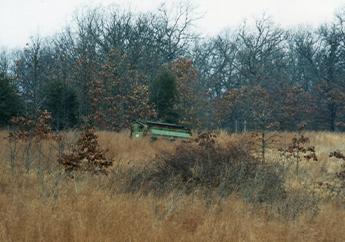Combined Preliminary Assessment/ Site Inspection
Missouri Engineering Corp., a contractor for the city of Camdenton, originally coordinated the sludge removal from the lagoon during closure activities in July 1989. Although the closure was approved by the department’s Water Pollution Control Program, there was no knowledge of contamination at the lagoon at that time. Following the Superfund site investigation process, the department completed a combined preliminary assessment/ site inspection at the Camdenton Sludge Disposal Area in 1999. TCE was not detected in samples from the sludge material or surrounding soil. The department also sampled three nearby private drinking water wells. No TCE was detected in these wells. Residents also submitted well water samples to private laboratories, which detected TCE in the samples. However, the department conducted several rounds of sampling at the same area wells and was unable to detect TCE. No further action was recommended at that time.
Site Reassessment
In 2017, the department received new information from a Camdenton citizen that City Lagoon #3 sludge material may have been applied on two additional private properties. Citizens also voiced concern regarding potential contamination of private wells near the Camdenton Sludge Disposal Area site, which were not sampled during the 1999 investigation.
In June 2017, the department initiated a site reassessment investigation to determine whether additional sites had accepted City Lagoon #3 sludge waste and conduct additional drinking water sampling to expand on the 1999 investigation. After interviewing several individuals and examining city of Camdenton records, it was determined the sludge applied at the two private properties came from the city’s wastewater treatment facility on Ha Ha Tonka Road, not from City Lagoon #3. In October 2017, the department performed two site reassessment sampling events, which included collecting groundwater samples from public and private wells within one-half mile of the Camdenton Sludge Disposal Area site. The department collected samples from one public drinking water well, Camden County Public Water Supply District No. 2 (PWSD2) Backup Well #1, and 11 private drinking water wells within one-half mile of the site. To establish background levels of naturally occurring metals, the department also collected samples from two additional private wells located several miles away. All samples were collected from outdoor spigots nearest to the wellheads and analyzed for volatile organic compounds (VOCs), including TCE, and site-related metals. Trace metals were detected in several samples at levels below National Primary and Secondary Drinking Water Standards. No VOCs were detected in any of the water samples.
The department collected samples from two private residences, one near the site and one background well further away, that had elevated lead concentrations. The department collected a follow-up sample from a post-water softener indoor faucet at the home near the site. This sample was non-detect for lead. It is likely that the lead contamination is a result of natural sources, historic mining activities or deteriorating piping. Lead concentrations encountered during the 1999 preliminary assessment/ site inspection soil sampling at the Camdenton Sludge Disposal Area site were not particularly high. Lead was detected at levels below those permissible in residential soils. It is unlikely that the elevated lead in the impacted well is caused by the site.
Below are analytical results for the Camden County PWSD2 Backup Well #1 samples, which is maintained for emergency use only. PWSD2 currently supplies water to county residents from two active wells located over two miles from the site. For information about how to read and interpret the data, visit Understanding Data.
The department performed two investigations at the Camdenton Sludge Disposal Area site. The original preliminary assessment/site investigation was completed in 1999. No TCE was documented in any samples from the 1999 investigation.
The follow-up site reassessment was completed in 2019. The department initiated the reassessment to determine whether additional sites had accepted City Lagoon #3 sludge waste and conduct additional drinking water sampling to expand on the 1999 investigation. During the investigation it was determined the two private properties in question actually accepted sludge from the city’s wastewater treatment facility on Ha Ha Tonka Road. No TCE was documented in any samples from the October 2017 site reassessment sampling.
Given that sludge and surrounding soil samples collected in 1999 from the Camdenton Sludge Disposal Area site did not contain any TCE, and there is no groundwater contamination in drinking water wells surrounding the site. No further investigation is planned at this time.

